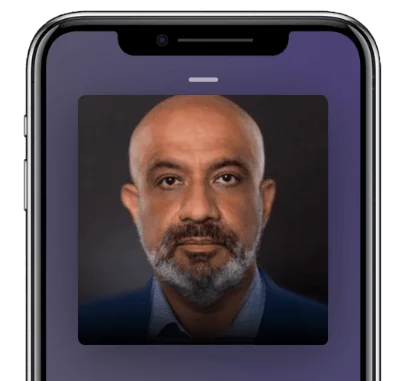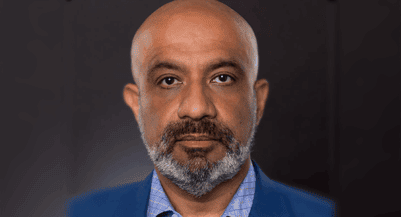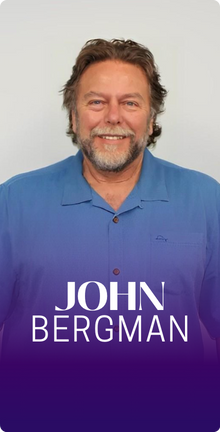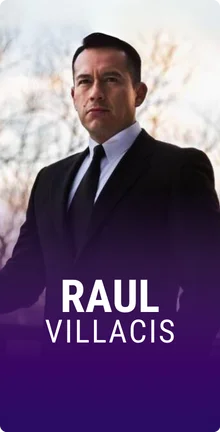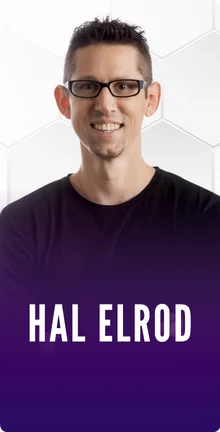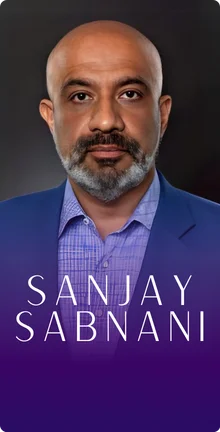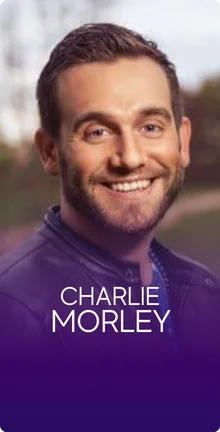Hello, and welcome to Get Yourself Optimized. I’m your host, Stephan Spencer, and today, I have Sanjay Sabnani with me. I’ve known Sanjay for at least a few years now. How long has it been? I think, maybe, four or five years? I don’t know, but I sold one of my websites to his company-the website, Writers.net, which is a community of published authors. It’s a directory of published authors, and it has a lot of forum posts and so forth. I sold that site that I had founded in 1995 or actually, 1994. I started it, Writers.net, and his company acquired it, and what was that? 2012 or something like that? I don’t remember. Anyway, I met Sanjay at an event-Sanjay, which event was that?
Yes. Stephan, I believe we go back to 2010, right? Time flies, and it was Think Tank in 2010. I acquired Writers.net in 2011.
Right. Got it! And that was through your company, CrowdGather.
Yes, sir.
Which you still have. It’s publicly traded. It’s a digital media company that owns a bunch of different online community sites. You are the CEO of that company. You also are doing some other things, which we’ll talk about, that are quite interesting. You’re an accomplished executive and a financier with extensive experience in building high-growth businesses and various emerging sectors. One of those sectors that you are working on now is Cannabis, which I don’t know a lot about, I’ve actually never smoked weed, but it’s a big business opportunity with legalization, I get that, and some folks are making quite a lot of money in that sector. You also have some non-profit involvements. You were chairman of the board of Artwallah and TiE or The Indus Entrepreneurs.
Yeah. Those are both passed off. They’re just in my bio, right? Currently, I’m focused much more on for-profit. There was a phase in my life where I guess I ended up over volunteering for things, and I realized that I’m not yet retired so I have to come back.
Yeah, right. Okay. Well, even if you could retire, would you do it?
No, because I wouldn’t know what to do because I have already seen that if I retire, I’m going to get talked into non-profits so I’d rather just work.
Yeah. I mean, people who can retire never do.
Yes.
Also, you have a couple of businesses that you’ve started that are Cannbis-related. I’ll mention those. There’s WoahStork and Gateway – www.gtwy.
If I find the right teams for those other projects, then I can quickly help them come into reality.
I’m an advisor to both of those. WoahStork is out of Los Angeles. Actually, a team is out of UCLA. Nico, who is the founder is a Ph.D. in neuroscience. They’re seeking to be the Netflix of Cannabis I.E. strain selection based upon some of the algorithms he’s developed. Gateway is a full immersion incubator similar to Y Combinator or 500 Startups. They’re out of Oakland, which is really ground zero for the cannabis industry, and that’s focused on digital assets in the Cannabis space so I’m a mentor to their startups. I’m on the advisory board of WoahStork. I have a couple of my own projects, but they’re very nascent at this point. I don’t have the time to focus on them because CrowdGather is my focus. What I would like those, if I find the right teams for those other projects, then I can quickly help them come into reality.
Right, right. Okay. You’re also a contributor to The Huffington Post, Forbes, and Slate. You’ve also published to medical treatment addiction textbooks chapters. What was the topic in those books?
Treatment of dependence to sedative, anxiolytics, and hypnotics. Basically, sleeping pills, Valiums, Xanax, and the entire class of the benzodiazepines. My focus in expertise is very narrow. It’s the GABA receptor, which governs memory, sleep, and anxiety so it’s pretty profound in simplifications, but since we’re geek-to-geek, I pretty much geek out pretty heavily on this one little slice. I’m pretty proud because I’m the only non-pedigreed author in that entire textbook. I’m the only person with a B.A. in English Literature as opposed to an M.B. or a Ph.D.
A couple of years ago, one of the studies I commissioned, I actually got an acknowledgment in the journal of neuroscience so I went hard and deep on one little piece, and part of that relates to one of my cannabis projects, which is CannTreat, which is to help with dependence to cannabis, which many people believe is non-existent or can’t happen. I’m here to tell you that it does happen. It can happen, especially with the strength of what’s out there in the market. That’s how I’m continuing that theme, but that was just a chapter of my life. A public company that I was a senior executive at, and like I said, I geeked out.
Wow, yes, you sure did! I think you have a patent that you got in that area.
Yes. I’ve authored several patents on the treatment of anxiety, eating, and addictive disorders. They are, unfortunately, not owned by me, they’re owned by my former employer.
But you’re an author of several patents.
That’s right.
Not just applied for, but were awarded.
Yes.
Awesome! Well, welcome, Sanjay! It’s great to have you on the show.
Thank you for having me, Stephan. It’s a pleasure!
Yeah. I mean, I love bumping into at MeTal events, and I’ve always enjoyed our interactions.
Likewise.
Let’s start with-you had a major life shift here with-well, you’ve had multiple ones, but let’s focus on you lost 65 pounds. That’s pretty impressive! You have an interesting story about how you did it, and it’s kind of not the typical answer of hitting the gym and going on a low-carb diet or something. Tell us what happened there.
Sure, so I have in an interesting way. I’m sort of going through my youth on a delayed basis. I was old at a very young age. I ended up in a very long relationship from the age of 19 until last year, and during all of this time, my weight kept increasing, and I was just sort of not aware. I would manage stress very effectively through my body, and I felt invincible because I was able to do it. I just kept getting bigger. At a certain point in 2012, I hit the wall. My immune system crashed. I ended up with shingles that year, and I ended up with tuberculosis of the lymph node. I guess I was exposed at some point, and these are things that happen if you’re either immunocompromised or you’re very old. They inoculate for shingles at 65 because when you’re older, your immune system goes down and these things happen so it was a wake-up call.
I entered therapy, I started thinking about things, and coincident with this because I had pretty much stopped sleeping. I didn’t know what was wrong, but something was wrong. I had stopped sleeping, business was faltering, and there was a lot of tension in my life. In speaking to my doctor about sleep, he was ready to prescribe me sleep medications. As we discussed earlier, I’m an expert on how dangerous those class of medications are and how to treat people who are on them so I asked him. I said, “Hey, doc! If I used cannabis instead?” He said, “Do it.” Without hesitation, he said, “For sleep.” It is least dependence forming, best long term solution, and he said, “If you don’t sleep, you’re going to die so we need to solve this.” I started it.
Now, as the father of three teenage daughters, Stephan, I’m out of the closet on cannabis now because last year, we acquired a site called WeedTracker, and I speak on cannabis. My kids are older-20, 18, and 14-so they’re aware. At that time, they were all in high school so I refused to smoke it because it has a very distinct aroma. I started taking medical edibles at night-again, for sleep. I found in a way that it’s slowed down that Type-A reactive high-stress nature of mine. It allowed me to slow down, and as I slowed down, I also paralleled with that and began meditation. I was able to see my thoughts, see my emotions, see my habits, and in a way, I was able to unpeel this and figure things out to the benefit of my body and my health significantly. I was 280 at the peak in 2012. I’m about 217-I should 220, but I’m counting every little piece here.
Looking at myself and listening to myself has created this awareness that allowed me to transform.
It has been a good run, and I’m not done yet-I continue to do it. I work out twice a week with a trainer because, in my entire history, I found being motivated to work out on my own is not something I possess, but if I think I’m going to lose the $60 for the trainer, I’ll be damned if I’m not there, right? I’m just using my own economic motivation. Then, for diet-really, the stack that I have for diet is I eat a really good big breakfast, right? It almost doesn’t matter what I eat for breakfast. I don’t eat fried things anymore, but I’m saying, I can have sunny-side eggs, bacon, and toast-it doesn’t affect me. I have a snack for lunch because I’m really not hungry because I’m eating breakfast like a farmer, and then I have my dinner basically by six P.M. Doing it this way in combination with meditation, with looking at myself, and with listening to myself has created this awareness that’s allowed me to transform.
Wow! That is awesome! So, how much sleep do you get now versus what you said you stopped sleeping? I mean, you literally die if you don’t get to sleep.
At the time when the doctor and I had the conversation, I was just sleeping for four hours, right? Because I was tired, I was using caffeine. As part of this journey of self-discovery, I’ve also done 23andMe-my genetic analysis, and I’m a slow caffeine metabolizer, which means it doesn’t work on me properly, and I’m in that minority 10% where it actually can cause heart risk. It was not a good scenario. I was over-stimulated at the wrong times because of a lack of a certain enzyme, and I was not sleeping because of stress and worry. In a way, where I am now in terms of sleep, I think I’m at about seven hours or six-and-a-half to seven hours consistently, which is plenty for me. Since I’m getting older, Stephan, the thing that wakes me up is having to go to the bathroom in the morning. And I’ve tried to talk to a doctor about that and he says, “You’re getting older. That’s what happens.” That seems to be more the limiting factor now as opposed to my ability to get to and stay in deep sleep.
Yeah. Do you track your deep sleep or your sleep in general? I use, not every day or every night, but I do use a Zeo sleep tracker. This thing that you slap in your forehead. You’ll look like a total geek. There’s an app on your iPhone that will sync with that.
Well, I will look into that. I’ve been meaning to, but I have not done that. I sleep on my stomach so I have to figure out the forehead thing, but it shouldn’t make a difference. If it sticks, it sticks, but I have not. I am able to discern. I spend a lot of time inside my head so I’m able to tell the quality of my sleep by the quality of my focus in the morning. I meditate every morning. I pretty much have hours of “get ready” ritual, and part of that is about 30 minutes of introspection and meditation. When I can’t concentrate-if I’m chanting, for example, as part of zooming into myself if I can’t do that, then I know I didn’t have a good night.
I see. You have a really in-depth morning ritual that takes you about an hour, you said?
Yes.
Walk us through what that looks like because I had a whole episode on morning rituals, and that was a very high-powered sort of morning ritual. This was Raul Villacis. He’s a “get-done” sort of guy. It’s a little too extreme for me. It’s a little too high energy, but-
I’m able to tell the quality of my sleep by the quality of my focus in the morning.
Oh, mine is not at all. It’s intense in the sense that you have to still your mind. That is the intent of the session.
Yeah, so walk us through.
Totally. Here’s what happened. You and your listeners are going to learn maybe a little bit too much about me, but I have, and I try and compensate for this, which I know is wasteful in other ways, but I take a bath every morning. I’m in the bathtub. I have a Bluetooth speaker. In an interesting way, entering into this sector in meditating and doing yoga and other things have made me more Indian than I was maybe brought up. I believe that Indian food, yoga, meditation, and cannabis are all gateways into this culture, and so as a result, I was prescribed during my stress because I sought all sorts of counsel-not just medical and not just psychological, but my family sent me a priest from India. He did the Indian version. We moved to Calabasas from Woodland Hills because he said that the office just didn’t work.
Again, I am a very science-based and rational person, but when you hit the wall, it’s better to look at all options. He prescribed chanting to me, and he suggested that I do one “mala.” A “mala” being the equivalent of a rosary with 108 beads. I get into the bath, I turn on my Bluetooth speaker, and I have my iPad on me. I begin playing some chants that I possibly couldn’t do because they’re in Sanskrit. The drone sound in a lot of Hindu chanting is actually very meditative and trance-like. Now, what I’m doing at this time-oh, actually, before I get in the bathtub, I do about five minutes of squats and lunges just to kind of warm-up my body a little then I go in the tub, I begin this sort of listening. It’s a 46-minute chant that I always start out with so brush your teeth, shave, etc.
I sit in the tub, and at a certain point, I decide when I’ve stilled my thoughts enough, I have to, as part of this, I get all my emails read, I do all of that work stuff in the tub because I know otherwise, I’ll be jumpy and not know what my day looks like so I settle myself and then forced myself to de-stress from what I have to do, and find the time to do one or two entire cycles. Each cycle now since I’m proficient at it is about 12 minutes long. I do 12 to 24, and usually, I am done before the end of the 46 minutes. After that, it’s really just then organizing my thoughts and schedule mentally for how I’m going to execute that day, right? The one hour includes brushing, shaving, bathing, meditating, organizing preliminary work, and skimming updates and notifications on things. I don’t want to make it sound like I’m sitting there and just nodding my head up and down like a monk, right?
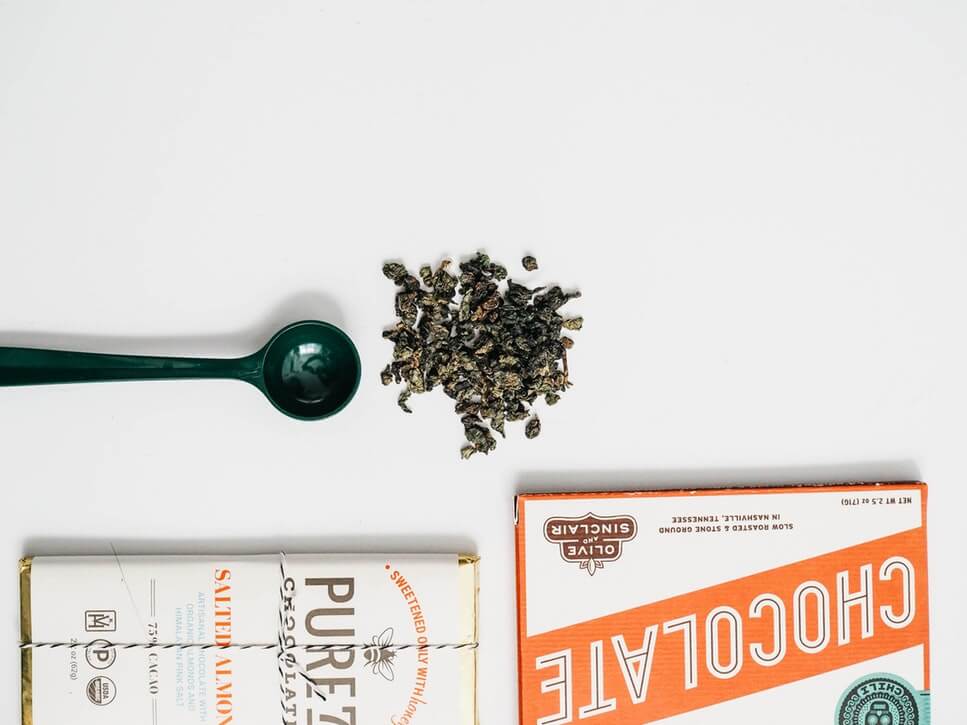
Contemplating your navel, yes.
That 12 to 24 minutes-it used to be hard, but recently, it just felt blissful. I feel grateful for that. Anytime I close my eyes now, I’m in a different place so it’s working.
That’s awesome! I was recently assigned a mantra by Amma, the hugging saint?
Oh, wonderful! Yes, yes, yes! I’ve hugged her!
Amazing, right? Amazing experience!
Yes!
I have my mantra, and I have the-I don’t know what you call it? The kind of rosary thing. It’s got 108 beads.
If yours is made out of the rippled seeds then it’s a “rudraksha mala,” but “mala” means necklace, and it traditionally refers to the 108 bead count in Hinduism and Buddhism.
Yeah. I think this one is made out of rosewood.
Okay, yeah.
There are 108 beads, and then you count in your head while you’re-well, you don’t even need to count, you just read-
Yeah.
-the mantra 108 times, and I would do that on the balcony. It’s really calming and I guess it connects you with your guru. Amma was the one who gave me the mantra so I guess I’m connecting with her or we’re connected because-correct me if I’m wrong, but my understanding in Hinduism is that, she’s basically, by agreeing to be our teacher, and by giving us mantras and so forth, she is foregoing the ability to not escape the cycle of birth, death, and rebirth where she could evolve out of that. What is the time of that when you evolve past that?
Well, there are several different words. I mean, the Buddhist word is you attain “nirvana,” but “moksha” is liberation or freedom, right?
Yeah, “moksha.”
Right? “Moksha” is more classically used in Hinduism.
Right, so apparently, she’s giving up her “moksha” because she has to stick around to help all of her students that she has given these mantras to. Is that a correct summary?
I would say this: I’m off the deep end when it comes to Hinduism and the kind of the philosophy behind this because, as I noted earlier, if you give me a subject I’m into, I will go hard into it so I would say that it’s a good sound bite. It sounds good, but really the concept of meditating to a guru is in a very specific legacy in Hinduism, and it’s contributed to Shiva, right? Amma is also a siddhi yogi. Again, that lineage comes from Shiva and Shaiviteconcepts. Part of that is that there is this really amazing sort of parable, a poetic one, where Shiva’s consort, Parvati, who is also a goddess, asks him, “What’s the deal? You’re a god. Why do you have to prostrate yourself in front of the guru? Why do you accept a master?” and so in this very beautiful hymn, which is coincidentally, I’m getting a little bit of goosebumps when you’re mentioning to me that you’re chanting because the thing I listen to in the morning is called the Guru Gita.
If you acknowledge your own divinity without losing your ego first, then you turn into Donald Trump
It is the discourse between Shiva and Parvati, and there’s a version on YouTube by a non-Indian person named Leo Dale that I listen to every single morning. It’s on iTunes, and I bought it. Really, it’s a transitive property. What the concept of this is, you are supposed to surrender yourself at the feet of a guru. This entire discourse is about how the guru’s feet are better than anything you will ever be, right? In essence, it’s a dissolution and surrender of your ego, but when you advance it, what you realize is that, that this concept of “moksha” enlightenment becomes when you are able to humble yourself to a guru, but in a certain perspective, you realize that that guru is within you. It’s an acknowledgment of your own divinity, but if you acknowledge your own divinity without losing your ego first, then you turn into Donald Trump, maybe so that’s kind of how I see it. Again, I’m simplifying. Amma is obviously in a different league, and I would go with what she says. I’m just telling you this sort of geek interpretation.
I love that though. That’s great.
To me, that’s how I sort of see it. The process was to surrender, right? To give up. In life, I think that’s what I learned in the past few years. Stop fighting it. See what happens.
Yeah.
And it’s been working out.
Well, I’ve been taking Kabbalah classes, and a lot of this stuff is in line with what you’re describing.
Absolutely!
When you dissolve and surrender the ego, this is one of the core precepts of Kabbalistic teachings. The ego where you have things like hatred for no reason and just the stuff that gets you stuck to greed, envy, anger, and all that is just in the ego. If you release all that, and you live a very intentional soulful life, it’s just going to open you in ways. I’ve been opened so many ways because of these Kabbalistic teachings. I’ve been applying that in my life in just really simple ways like making peace with the neighbor upstairs who we were just really at odds. I called the cops on him and stuff because he’s making a lot of noise and stuff. My Kabbalah teacher tells me, “Instead of trying to solve this, just send him light. Pray for him. Clearly, he’s got some darkness there, and it will help him if he’s got some light and some consciousness so pray for him.” And I did. I ran into him in the elevator like a couple weeks ago, and I apologized to the guy for calling the cops on him. Even though I was within my rights and all to justify it, right?
Sure, of course!
My ego has lots of reasons not to apologize, right? But I apologized to him, and then he told me that he had PTSD, and this is what he does when he has anxiety attack-it’s to turn the music up real loud.
Because he has to drown.
I had no idea!
Yeah, he has to drown. That was amazing! You came at him with love, and you saw a completely different outcome.
Yeah, and now, he’s not playing the music real loud, and if he does, I get it-he’s in trouble. It’s not like, “Hey, he’s just being inconsiderate, and I need to do a podcast interview and what the heck?” This is really annoying, and it’s not my kind of music either. It’s heavy metal, but what a gift that was.
Yeah.
I wouldn’t have been open to that if I just let my ego drive the bus, but because I’m doing these Kabbalah classes, and I’m thinking about being conscious, intentional, being soulful, and not just full of ego, I’m able to check my ego. I don’t know if you can kill the ego or whatever, but I’m able to distinguish my ego from my soul and my courageousness and keep it in check.
And so that same thing that you’re telling me-first of all, it’s delightful to have this conversation with you because, I think, both of us are becoming more “hippie-ish,” you know?
Yeah.
And by that, I mean all the good attributes of that and not just the B.O and the long hair! My head is shaved bald so obviously, that’s not it for me, but what you’re saying resonates with me in many ways. I’ll tell you-one thing that you and I have discussed, which is as part of this transformation last year, since cannabis had been sort of helpful to me understanding myself and slowing myself down, I started learning more and more about kind of the role of plant teachers in various cultures and obviously, in that pantheon, there is one out of the jungles of South America which ranks higher than anything else, right? That is a brew that for some reason, people in the jungle 2,000 years ago mashed a vine, boiled some leaves, mixed them together, and created what we call Ayahuasca, which is one of the most potent psychedelics. It’s not pleasant.
I’m a seeker, and I’m on a journey to learn about the only thing I think I can learn about which is me.
Most people, even though you’re wearing cute, white outfits and there’s incense and stuff, every now and then you’ll hear somebody purge, right? It’s a very weird experience. When you and I first met, it wasn’t the kind of thing I would have signed up for, but at a certain point, I said, “If there is a methodology in any culture that a large majority of people are saying it’s transformative-whether it’s Kabbalah, whether it’s meditation, or whether it’s Hinduism, I want to explore it. I’m a seeker, and I’m on a journey to learn about the only thing I think I can learn about which is me.” One thing happened there that has changed my entire perspective.
First of all, before that meditation, was me trying and it was kind of a chore. After that, it’s been blissful. What I think happened is, I realized that words are problems, right? I know it sounds normal, but from an evolutionary perspective, Stephan, if you and I didn’t have words and written language, we’d be exactly the same, right? Because language is not really a significant adaptation. It’s kind of over-the-top as in amassing wealth and building things. It doesn’t affect your day to day, right? Basic communication. You have to think of us as a species, there was a time when we did not really speak the way we do. We did not have writing. We know of our time in history that was pre-literate so, what did people do then? Did they not think? Did they not function? Did they not have thoughts? Obviously, they did so I refer to this basket as pre-lingual, right? Getting to that and understanding that-understanding the animal aspect of me.
Last year, I was invited to speak at the startup conference in Beirut, Lebanon. Banque Du Liban, which is the preeminent bank there, had a startup conference, and I was there. This lovely local couple took me out sightseeing the next day. I made friends. I was, I guess, talking, and I’m so used to making self-deprecating remarks or lightening the mood by making fun of myself, and so this guy looked at me. He’s very successful and a great human being, and he said, “Sanjay, you should listen to yourself talk.” He goes, “Can I recommend a book to you?” The book he recommended was What to Say When You Speak to Yourself. I bought the book, and I didn’t even have to read it.
I understood loud and clear that this self-talk in my mind is driving negative outcomes, and I’m not even paying attention to it so what Ayahuasca did was, it allowed me to communicate with myself without language because in that state, your words don’t mean anything. It’s anacondas and elephants and jungles. If you read the body, it’s just as weird as it can be, but if you read the after, everybody says it did something significant. What I realized then is, if I say, “I’m disappointed in myself,” who’s talking to whom about whom, right? Who is the “I”? In meditation, my image for meditation is this: You are a child kneeling over a crystal clear pond, right? The child in essence is your consciousness. The pond is that space in which we can acknowledge things. There’s Koi fish that you see swimming below you. Those are your thoughts and emotions. They’re not you.
Yeah.
Right? The space in which they occur is not you. You are above that. This tension I went on was related to your concept about ego and about getting rid of the ego, I think at a certain point you realize that there is no such thing because you dissolve into this higher category where you feel like you’re part of the species. The word that comes to me over and over again is “belonging,” right? This journey has made me feel like I belong to a species. I wish the species knew we were a species instead of thinking they’re super human, amazing, egotistical, and narcissistic individuals. That’s sort of my thing. It’s the guerilla in me is emerging as part of the stuff.
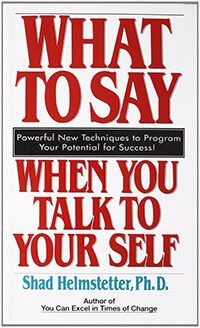
Interesting. This really resonates for me because I had a recent breakthrough at a workshop taught by Ephraim Olschewski. He’s actually one of the people I’ve interviewed recently on Get Yourself Optimized. Great interview so all you listeners, check out Ephraim’s episode. I had this breakthrough that I am not my thoughts and feelings because we get so close to our thoughts and feelings for when we believe them. It’s ridiculous-our thoughts are actually true? I mean, seriously? There’s that episode from Byron Katie that is a must-listen as well. It’s all about getting out of suffering by not believing our thoughts anymore, but then there’s a step after that where you realize that you are not your thoughts and feelings.
There you go!
What am I if I am not my thoughts and feelings? Everything seems to happen. When you believe that you are your thoughts and feelings like we normally do, you’re living your life inside your head whereas, all life happens out here, and I’m pointing in front of me and around me. Life happens not inside between my two ears. When you get out here into the world, and that’s where your focus is, that’s where you believe you are existing instead of inside your head, and that you’re living embodiment of not being your thoughts and feelings, then whoosh-you get caught back up into your head, and then you have to get back out into where the world is, and everybody is and everything’s happening. It’s a process, and people listening might be thinking, “Wow, these guys are crazy!”
Yeah! Hey, Stephan, at least there’s two of us, right?
Yes! We can form our own cult.
Right.
How do you get there, other than like taking Ayahuasca, which personally I’m never going to take because I’m not into drugs.
Oh, no, I fully understand.
So, for me, I had to keep doing these workshops until finally I get it, but somebody who’s just listening and thinking, “Well, maybe that’s interesting. Maybe that’s useful. I don’t know. I’ll just keep doing what I’m doing.” How do you convince them of the power of this? What tools do you give them in addition to Ayahuasca? If that’s not an option for them, is there, maybe, some sort of deep meditation? Maybe in India? When I went to Oneness University outside of Chennai in India-wow, that was incredible! What a gift it was to be there! The experiences, the enlightenment, and everything that I got out of that were life-changing.
For as long as we’ve had Western culture, there’s always been the story of somebody going to India and finding-again, this process, whether it’s Kabbalah or whether it is seeking counsel of a priest or minister, what I like about Kabbalah and about Hinduism is this kind of this formal teacher-disciple type of relationship that you can tap into. I think, yes, meditating and chanting in and of themselves opened the doorway to where someone like me, who would not have hug Amma before, right? I would have thought that was just completely wacky.
For your audience to understand is, if any of them are skeptical, that was me, but slowly, giving myself space to look at me, to look at my thoughts, and trying to understand that those were distinct and separate from me, it just allowed little breakthroughs until one day a big one happened. Now, I must, just to be specific, because I worked in the addiction treatment field, I do not look at psychedelics. True plant psychedelics, as what we referred to as drugs, right? For example, in cannabis, I believe that THC, which, unfortunately, is becoming a bigger and bigger part of the market-they’re extracting the money, right? The actual drug. I believe that creates dependence and problems.
I think cannabis, you have to look at it is a plant, right? It comes from nature. We have cannabinoid receptors through our system cb1 and cb2. We produce these compounds endogenously, and these seem to supplement and integrate with what we already do. The other psychedelics like Ayahuasca-there’s not many parties you go to where you want to take a shot of a brown, viscous fluid and throw up on your friends only to be locked in a trance for six hours crying, rocking yourself, and comforting yourself, right? It’s very different. That word “drug,” yes, it is psychoactive and these are ways of getting into your brain, but I believe there are other ways. I happen to be more open to these sort of risks.
My best friend has always been between my ears so going inside doesn’t worry me, and I think that’s the process for everybody. Learn how to go inside. Too many people spend their time on the outside-perhaps, because I ate to manage my stress and refused to exercise. It was actually painful for me to move them and to get energy. What I had was something known as atypical depression. Nobody knows you’re depressed. You can get happy, but it just wears off really quick and the down state, and you have very low energy. In that state, I went inside a lot, but except, I was inside being negative to myself so first with meditation and cannabis, I said, “Whoa! Why are we being mean to me? Let’s be nicer to me,” and then it advanced. I think everyone can end up at these places of just feeling more peaceful and more aware. If you reject psychedelics, jungle juice, and Hinduism, read on mindfulness.
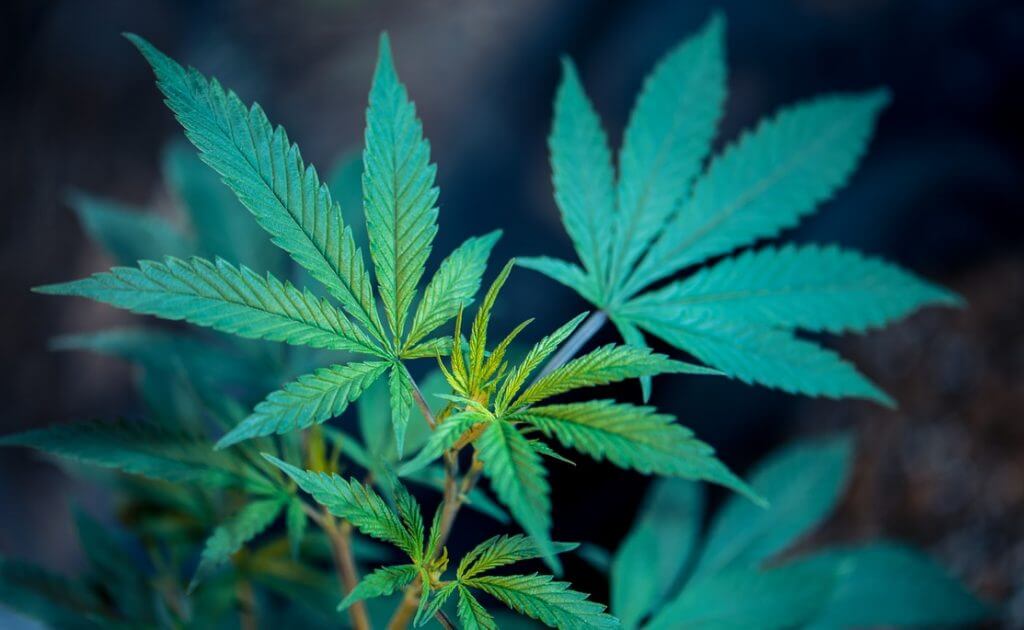
Yeah.
There’s an amazing book called Into the Magic Shop by Dr. James Doty. I don’t know if you heard him speak too, Stephan, but I got the book, and it’s very accessible to a western audience. I mean, his story of discovery of mindfulness. He heads-I’m trying to remember his bio-but he’s a professor of neurosurgery at Stanford University, and he is the Director of Compassion and Altruism Research, which is a heavily-endowed chair at Stanford University School of Meditation. Stanford is the foremost in the world on the study of the things you and I are talking about, and some of your audience is thinking as heely-feely, mumbo-jumbo.
Hopefully, they’re not thinking that because they wouldn’t be listening to my podcast if they’re all like that.
It’s no fun if everybody is lovey-dovey, right? I’m hoping for some of this, but I would suggest to look into this because I follow him on Twitter and Instagram. He’s always taking pictures with Eckhart Tolle who, again, is profound, right? There was a time when I read him, and it bored me to tears. There was a time I was ready for it and I go, “This is amazing!” There are plenty. I think our world is evolving to where we understand once you’ve got your basic needs met, your mind is what causes you to be tortured, right? It is the root of all suffering so mindfulness, awareness, and being present are all phrases that everybody needs to look at because there are clinical studies showing improvement in health outcomes.
Yeah.
My life is an evidence. It is improving my life so I would encourage everybody to go as deep as they can inside themselves-to travel within.
Yeah. I took mindfulness meditation for stress reduction. I took this class. It was part of like a University of Wisconsin UW health thing, and it was great. It was really good! I learned some stuff, and we got some CDs of Jon Kabat-Zinn. He’s a big deal in the mindfulness community so definitely check out his stuff, but what I found was, really, it was profound what happened. This was at a time when I was at a real low. I was going through some depression from my marriage breaking up, and that was a surprise to me because I didn’t think that it would end up like that. She was the one who filed for divorce, and I went through a couple of years where it was really rough until I found Tony Robbins and did all the firewalk stuff, and it completely rebooted my life.
One thing that was a bright light in that darkness for a couple of years was the mindfulness-based meditation. I had this one really profound experience that was actually really scary for me, but what happened was, I was trying to sleep. It was four in the morning. I was really sick, and I knew I needed to get to sleep because I was going to be just a wreck. I was really, really sick. At four A.M, I’m like, “Okay, I need to use this mindfulness thing and do some meditation so that I can quiet my mind,” because my mind was racing. There’s so much going on and I just couldn’t sleep so I started focusing. I focused on my breath, and I was able to not only quiet my thoughts, but I was able to distinguish individual thoughts that were happening simultaneously.
Ah, perfect!
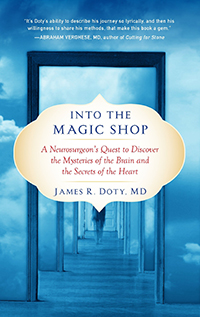
I’ve never been able to repeat that again so far. That was incredibly profound. It was like I was peeling away-if you imagine a rope and here are the strands of the rope, I was peeling away the strands one at a time, recognizing them happening simultaneously, and then quieting them one at a time. It was incredible.
That’s beautiful! That’s a lot of the ways when I said I had a breakthrough in meditation. I feel that that’s happening. Sometimes, I lose that momentary sort of ability to track, and I dysregulated because I’m human and not Amma or some enlightened being, but immediately, I’m able to talk to myself about why that happened, what happened, what I was thinking, how it’s connected to my pastor, my future, and my fears. I find this kind of process as exhausting in a certain way. But you learn so much about yourself. Having worked in addiction treatment in the past, one of the methodologies, because addiction is this thing that we really don’t have solutions for, is cognitive behavioral therapy, right? Cognitive-behavioral therapy is a step-by-step baby step talking to yourself about, “Why did I do that? Why did I feel this? How does it make you feel?” Now, it is the manual external methodology where you’re going asking yourself questions in a way to pull things out, and then when you get advance levels of meditation, that narrative just becomes self-aware, right? You see it because you realize that you’re distinct from it. You go, “Hey, the person I am behaved in this way or felt bad because of this stuff that my brain is doing to me.”
Yeah.
And that starts changing things for you-or did for me at least.
Oh yeah. I love CBT. It allows you to re-experience the activating event of the stimulus that you put a whole story around like, “Oh, well, this was what the person meant by that thing or whatever,” and then by applying the story to the event, you create misery for yourself instead of just like re-experiencing and re-evaluating it like, “Okay, let’s back to what that event was, and was that really the story? Was that was the person was thinking? Was that their intention when they did that thing?”
Yes!
Probably not, right? Let’s kind of play this through and see what that’s going to mean for me, and how my experience and the kind of the emotions that I tie into that activating event-it’s really powerful. I was just talking about this very thing on my episode with Steve Hill so I was just recording that a couple of hours ago. We were just talking about CBT.
Wonderful!
It’s kind of funny. There are so many wonderful modalities-CBT is one of them. EFT. Tapping is another one we talked about in the Steve Hill episode. The chanting thing-I did not understand the power of that until I was in India at Oneness University in the temple. There is so much energy in that temple. I mean, you feel it.
Oh, yeah! Sure!
You can feel it! Apparently, it was designed based on a “mandala.” They turned that into a three-dimensional structure using some sort of software or something to build this amazing temple. It’s full energy. I’m in that temple, the whole bunch of us, and we are chanting for, I think, it was 49 minutes straight. There was a significance of a particular number, and I think it was 49 minutes-it might have been 56, but-
Okay, wow!
Non-stop, saying over and over-“I am existence, consciousness, bliss. I am existence, consciousness, bliss. I am existence, consciousness, bliss.”
Now, did you say that in Sanskrit?
No, because we are all American or are English-speaking. It was, I guess, easier for us to say it in English. Whatever. I wasn’t the one in charge so I just did what I was told, and I just kept repeating it over and over and over again. We had some profound experiences. I had a profound experience. My fiancée, Orion, had an out-of-body experience during that chanting. Amazing!
Okay, so my fiancée actually had an out-of-body experience. It was absolutely amazing. It was life-changing for her, the experience she had during the chanting. Afterwards, we were all given a “diksha,” a oneness blessing, by these monks, and that was profound too. It opened a channel to the fabric of creation or something. We also had other types of meditation experiences as part of this trip to Oneness University. We did the deep breathing really fast.
Yeah. Kriya Yoga, obviously-
Yoga.
Yes.
Then we visited different realms while we were doing that. I felt like-there was the plant kingdom, the animal kingdom, the realm of the prophets or the higher beings or something-I forget-and then all way up to-like, there’s seven different levels. And I felt like I had visited the animal kingdom-that realm-and I was experiencing what it was like to be-I forget which animal. It might have been a horse or an elephant or something. But it was amazing, and I felt such sadness for all the meat that I had eaten in my life. I’m vegetarian now.
Okay.
Actually, I’m pescetarian so I’m still eating fish, but for most of my life, I have been a meat eater so I am in this experience doing the Kriya yoga, and when I was visiting the animal kingdom realm, I was just sobbing and apologizing to the animals for their suffering and for eating them. I forgot all about-until we’re just talking about it right now. I forgot all about that whole experience.
Yeah, and actually what you’re saying is key here for a question you asked earlier, which is, “How can people do this?” and I talked about mindfulness and awareness, but there are known methodologies, right? Kriya yoga-and “yoga” again, is a term in the US that is used for what is kind of the most minor aspect of yoga, which is physical yoga-yoga of the body. There’s Raja yoga, which is yoga of the mind, but the yoga which is devotional yoga. Kriya yoga, which is yoga of the breast, and all of this said, the sort of the lineages all. They all take their root from Shiva originally, but the methodologies and meditation-for example, I’ve been listening to Howard.
If you’re the type of person who can surrender, have faith, and just believe, all of these roads are open to you.
I was a very young man, right? Not somebody you would expect that could relate to this conversation, but he is one of the biggest proponents of transcendental meditation. His Jewish mother took him to Maharishi. He got trained and inducted, and he does is every day. I’ve heard interview after interview, right? He’s obviously not a subscriber to the rest of the culture and philosophy, but he has been transformed so TM is something that’s available-Art of Living through Sri Ravi Shankar. The only challenge with a lot of these things is, if you’re the type of person who can surrender, have faith, and just believe, all of these roads are open to you. I’m a very skeptical and cynical person so for me, I had to get beat up by life a bit in order to be receptive to these things, and then I had to see the benefit of them in small doses to myself, and now, I’m firmly on the other side.
Yeah. You know we had similar paths? And we’re getting beat up that way.
Yeah.
I was married at 19, and you were married at 19. I have three daughters, do you have three daughters?
I have three daughters-20, 18, and 14, yes.
Mine are 25, 23 ½, and 20. Yeah, I was really blindsided by my wife, at the time, of 18 years just saying we’re done. Boy, that put me in a tailspin! It ended up being the biggest gift ever.
I’m hoping to get to that peace with my relationship, but it has been difficult. However, it has taught me a lot-both the happy times as well as the not-so-happy times. I’m finding the way to be grateful.
Yeah. It can be tough when you have a traumatic event that is just hard to deal with you. You don’t see the gift in it.
I was an interesting kid in that I got angry at my family at the age of 13. As an Indian, this is strange, but I grew up in Hong Kong. I’m born and raised in Hong Kong. Back in the day, if you remember all electronics and toys had that nice, ubiquitous “Made in Hong Kong” right? I’m made in Hong Kong, but I left home at 13. I asked to be sent to boarding schools. That didn’t work out. I ended up stuck with relatives for my entire high school, and so by the time I met my wife, when I was 19, I wanted a family. I projected everything I had into building this unit family of mine, and recently, here I am again where I feel like, “Wow, I’m back to being me,” and then this realization-I’ve realize I’ve always just been me. The rest of it, I don’t have any control over, but with me, I do. That’s what I’m focused on now.
Yeah. I can relate.
No, no, no. There’s a lot of common-
Yeah.
It’s delightful.
Yeah, that was why I got married at 19-years-old because I wanted to go from dysfunction in all the family units that I had experienced. My whole childhood, I had been bounced around lots. I wanted stability, I wanted love, and I wanted to create that so I decided to start very early. Very, very early.
Very similar. Very parallel pattern. It’s interesting because the last time we really connected, we were both sort of focused on the digital stuff. You have already began your transformation. I remember talking to you about it, and you were doing the Tony Robbins and becoming more aware. I was still sort of cynical, but now, this conversation is so different, and I have to tell you that it’s delightful, right?
Likewise, yeah. Have you seen-there’s a new-oh, I don’t know how new it is, but it’s a documentary about Yogananda?
Yes.
Is it called Awake? Is that the name of it?
Yeah. Autobiography of a Yogi is the book. I don’t remember the name of the documentary, but I have seen it.
I love that movie.
Yes.
We’re not far from the center that he had founded, which is in Pacific Palisades. Have you been there? The Lake Shrine?
No. I’ve been meaning to. It’s just one of these things between work and then having my kids, but at some point, I will look into it because I have heard amazing things about it. Have you been?
I have. It’s really nice. What a great place to meditate. To just hang-out. It’s so beautiful-the views and everything. It’s magical. Have you read the Autobiography of a Yogi?
Yes.
What’s the biggest takeaway that you get from the book? I have not read it yet, but I keep hearing about how profound of a book it is. I know Steve Jobs saw it as one of the most important works and gave copies of it to people.
Yeah. I think it’s extremely significant if you consider it within the milieu in which it was released, right? This was the very first Eastern spiritual sort of entry into the West-into the US-right? As part of that, what he did, which was amazingly, was this sort of synthesis between Jesus, Christianity, and Hinduism. The tone in which he speaks in you would look at weird today because it was very formal-thou, thine-right? But, again, things, that if you go back to his time, were very appealing to a Western audience because it sounds like the King James Bible. I think at the essence, the truth, and the insights, what happens is, anything you read by someone who is enlightened really comes across the way I felt when I read Eckhart Tolle, which is like, “What is this? They’re saying pretty much nothing. There’s not much to grasp on, there are no formulas, and there are no rituals, there’s just this-once you’re aware, you’ll realize there’s no distinction between you and me and anyone else-or any creature.
Once you’re aware, you’ll realize there’s no distinction between you and me and anyone else-or any creature. Share on XYeah.
That sounds heely-feely, but his ability to deliver that to an audience that you would not have imagined would have been receptive to it is, I think, what is profound about him, right? I don’t have a specific verse or a paragraph or chapter-I read it a long, long time ago-that I could say resonated with me and that I would be able to cite or quote, but I do remember in general, even at the time I read it-being raised in Hong Kong, I went to British schools. I went to an Anglican school. We had prayer assemblies three times a week. We had a class called Scripture Union so I was formally schooled in the Bible, right? When I read this, I was reading it as a Western-educated person who found that I was able to tolerate it because it did not read like the Indian stuff.
Mm-hmm. Got it, yeah. I love the documentary. I’ve watched it multiple times.
Good! To me, the fact is, I think, the thing you can take away from him is that he started a school in India, right? He’d come here, and then he went back in there, and basically, he called it the “school of living” right?
Yeah.
What they taught you was everything. They taught you meditation and mindfulness, which more and more elementary schools are using. You’ll see it on your Facebook feed. People will share you little kids meditating because it’s helping significantly with them bonding with each other, reducing bullying, reducing anxiety, and neutralizing the effects of their difficult home life so it was his insight and, I think, this is part of it. We can’t just assume that non-Western, non-Judeo Christian, or ancient traditions don’t have some merit because as we’ve seen with the Mayans and their calendars, and the Egyptians and their pyramids, these people weren’t sitting on their thumbs.
They were doing some amazing stuff, and so what I got out of Yogananda, my biggest takeaway is that, really, you shouldn’t have a “school of learning.” I heard somebody say that if you had a time-traveler who came from the 1800’s to the current time? Think about this. It’s profound in its insight. This person, the only thing he would recognize in this world is our schools because that’s how miserable, old, and anachronistic they are as artifacts of this weird methodology of cramming things into your head without improving your overall life skills and well-being, right? In a way, I think, you and I are both, right now, students of the “school of living,” and that’s what I’d like to encourage everybody to do.
Yeah. I love that. For everybody listening, get and watch that movie. It’s fantastic. One last thing I want to cover with you-
Yes, sir?
It’s just kind of a side topic, but it’s just really curious to me-you know a bit about pheromones because you created a product that was like a pheromone-type of product.
Yes.
Could you share a little bit on pheromones?
Sure! Years back, I was a consultant to a company called Human Pheromone Sciences. Their research is based out of the University of Utah in Salt Lake. Dr. Jennings is a preeminent scientist in this field, and I consulted to them in the late 90’s so I was there kind of at the initial basis of pheromones. As I learned about their products, what happened was, in 2008, when I started this company, the CEO of that company called me and said they had finally found a compound they’ve been looking.
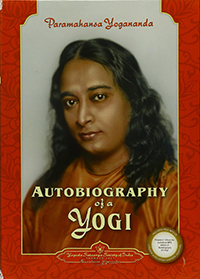
The first two compounds-androstadienone and estradiol-they both improved well-being and mood-one in men and one in women, right? But it wasn’t what-you know, everybody, when they hear “pheromones” they want something that increases arousal and passion-they haven’t found that. Because these were scientists, if it wasn’t backed up by a study, they weren’t going to say it or believe in it. The first product this company had was a fragrance called Realm. They did an infomercial. They sold 26-million in the first year, and people felt good with it. I was intrigued by pheromones, and I had read a lot online.
My focus is online forums, right? That’s what my company crowd-gather-it’s based upon. There were a lot of pheromones forums. I would read all these tales of different ingredients so when Bill called me, he said, “Eureka! We have it!” I said, “What do you have?” He goes, “We found a compound. It’s called Muricin Aglycone. It’s found in nature-only in red underwater sea coral. Gersemia Rubiformis is the species of the coral,” and I said, “Okay, what does this have to do with the price of tea in China?” He said, “Sanjay, they’re screening molecules that look like known pheromones, and so many of them come in this class-based compounds.” They found this, they tried it out on rats, and all of a sudden, they saw certain effects. They did a human study, and for the first time, the research name for this was ER303.
ER303, lo and behold, unlike their first two compounds-and also, those first two compounds made their way into three Avon fragrances and Dial Magnetic Body Wash so a lot of consumer-product companies were secretly buying these ingredients to add because they’re fully legal for them to use and they’re soon-to-be inert, and so these are kind of the secret sauce and several compounds, but I wanted something that was aimed more at my audience, which is geeky guys on forums. We talked about it. ER303 has shown increase in arousal in both men and women so he wanted to find a way that we could do something with it. What I did was, working with them, we designed a fragrance, which is still there.
It’s available on Erox.com. It has not been a core focus of our company because we are in the digital space, but it is a pretty consistent seller at Erox.com. That fragrance-I use it religiously. It was designed by a top-notch firm called Firmenich, which is based out of New York. Just like you do wine-tastings, we did sort of “fragrance-sniffings,” right? I was able to work with them. I have a very sensitive nose like a first-trimester pregnant woman. I get nauseous. I don’t like smells. I wanted something that was lower on fragrance content that was built as a body spray that could pack maximum pheromones, and in addition to ER303, we put in the other two. It’s a fragrance that-if you’re around men, they’re going to feel good; if you’re a man, you’re going to feel good; women are going to feel good, plus it’s got the height in arousal, right?
There’s a forum out there called Pherotalk. There’s a sub-forum on Erox that people are talking about and will give you their reports and stuff so it is an area that is of tremendous interest because the nose is a direct pathway to the brain. The concept here is that we have a vestigial or supposed-to-be vestigial organ called the Vomeronasal Organ or VNO, which in animals is active, and it receives pheromones in humans. We’re not quite sure if it still works or goes to the brain, but we’re seeing effects in these things. Human Pheromone Sciences had a sister company-they’re both still around-Pheran. Pheran is going through FDA trials for medical uses, and Human Pheromone Sciences has the consumer uses on the same patent portfolio. That’s the quickest version I can give you of my foray into pheromones, but that fragrance is available at Erox.com. Everybody I know hopes I give it to them as a gift. The next time I see you, Stephan, I’ll bring you some.
Oh, thank you!
Yes.
This is just mind-blowing-all this stuff that we’ve been talking about. It’s a lot of fun!How would somebody take the next step with learning more about these sorts of things? I mean, you’ve got such deep knowledge about Hinduism, mindfulness, and so many different things.
I would say this: My Facebook is public, and I have several thousand followers so that is one easy way to sort of enter my world. Friends, of course. I have kids and stuff. I like to know people. That’s not to say that followers don’t, sometimes, become friends, but it’s easier for me if people put in follow requests. There’s a site out there called Quora, which is a question-and-answer site that I have been pretty prolific on. I have over 3,000 answers. Almost all of my publications- Huffington Post, Fatherly, Forbes, Slate, Salon, Time Magazine, and Business Insider are all answers of mine on Quora that have been syndicated by them. Quora is a place where people can directly ask me to answer a question, and I can look at it. I also have a large body of work.
Finally, my company is called CrowdGather so on Twitter and Instagram, I’m @crowdgather. Instagram-I’m not really that active on so I would say Twitter is a lot more sensible. Our company website is www.crowdgather.com, and our symbol on the OTC is CRWG. We’re in the process of transforming the business. In fact, I’ve aimed the business at the Cannabis-phase. Our name is CrowdGather so we’re going to continue to gather the crowd online through digital forums, focus on Cannabis, led by WeedTracker-a site we bought last year-and then, offline, before the end of this year, we’ll have our first Cannabis co-working office space most likely in North Hollywood. We’re scouting out locations. I’ve been working on that, and again, the company that emerges because we’ve had three-four years of very rough times. We had to liquidate assets. We recently sold our social gaming business for $3.5 million so what is going to emerge by this fall since it’s already a new Sanjay you’re speaking to? There’s going to be a new CrowdGather so I would see if people can follow along by just looking at those names.
Yeah, awesome! Well, I’m inspired to dig deeper into yoga, and I’m going to check out the book, Autobiography of a Yogi. I’ll look forward to seeing you at the next Metal event.
Perfect, Stephan! This has been really fun. Thank you!
Yes, it has. I’m so glad that we finally connected and did this because we’ve been talking about doing it for a while.
Yeah! Now, we have to figure out how to actually hang out in person too since you have now moved to Southern California in LA so perfect!
I know! We’re practically neighbors! All right, well, listeners, I hope you found this episode fun, enlightening, and inspiring. I’m your host, Stephan Spencer, signing off.
Important Links
Connect with Sanjay Sabnani
Books
Previous Get Yourself Optimized Episodes
Further Resources

